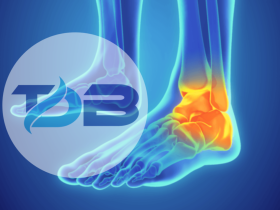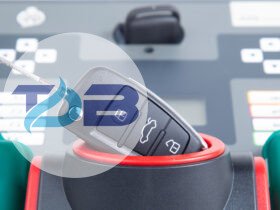In the glossy expanse of modern banking halls, where sleek interfaces blend with quiet efficiency, there is a palpable shift in the air. It’s not just money changing hands anymore—it’s data, intricately woven through the threads of our daily lives. Among these strands, biometric authentication emerges as a beacon of futuristic finance, promising both ease and security. But as we place our fingers on glossy sensors and stare into the unblinking eyes of facial recognition scanners, questions of privacy and security cast long shadows.
The Rise of Biometric Authentication
Biometric authentication in financial transactions is a double-edged sword in a world of technological advancement. On one side, there’s unmatched comfort. Imagine walking into your neighborhood bank or even just pulling out your smartphone, where all you have to do to get your hard-earned money is show your face or touch a sensor. You won’t have to look for your wallet or remember passwords anymore; all you need to do is scan the card and you’ll be in.
Banks and financial institutions, from the skyscrapers of New York to the bustling markets of Tokyo, have eagerly adopted these methods. Giants like HSBC and Barclays tout facial and fingerprint recognition as game-changers for consumer security. Indeed, these technologies offer a hard-to-replicate level of security, theoretically reducing the risk of fraud.
The Privacy Paradox
Yet, as we delve deeper into this brave new world of banking, the waters muddy. Biometric data, by its very nature, is intimately personal. Unlike a password or a PIN, it cannot be changed if compromised. This permanence carries profound implications for privacy. Sarah, a graphic designer from San Francisco, shares her trepidation: “It feels invasive. My face, my fingerprint—they’re parts of my identity, not just keys to my bank account.”
This sentiment echoes across oceans. In London, Edward, a retired schoolteacher, hesitates at the threshold of biometric banking. “There’s a part of me that’s thrilled by the technology,” he admits, “but another part that’s terrified at the thought of my biometric details floating around in some database, vulnerable to hackers.”
Security: A Fragile Fortress
The security of biometric data is another crucial battleground. High-profile breaches have already raised alarms. In 2019, a major financial institution faced a severe backlash when it was revealed that the biometric data of over a million people had been potentially compromised. The incident not only sparked a debate on the security of such information but also left many customers like Mia from Amsterdam feeling betrayed. “I trusted them with the most personal data, and they failed me,” she laments.
Moreover, the technology itself is not infallible. Sophisticated cyber attackers have demonstrated that even biometric systems can be fooled. Techniques like facial recognition software have been tricked with photographs, videos, and even high-quality masks, revealing chinks in the armor that we are only beginning to understand.
A Balance of Power
Despite these concerns, the allure of biometric authentication remains strong. It offers a seductive blend of simplicity and security that traditional methods struggle to match. Financial advisors like John from Sydney advocate for a balanced approach: “We can’t put the genie back in the bottle. Instead, we need to focus on improving the technology and addressing the legitimate concerns of our customers about privacy and security.”
Regulations and technological safeguards are indeed catching up, albeit slowly. New policies and innovations aim to protect biometric data and ensure that it is stored and used responsibly, offering a glimmer of hope to those who fear for their personal information.
Real-Life Resonance
Real-world applications of biometric technology illustrate its potential. In Sweden, a local bank has integrated fingerprint scanners that not only allow access to accounts but also link directly to customers’ cryptocurrency wallets, blending traditional and digital finance. In Singapore, facial recognition technology is not just a method of authentication but also serves as a basis for personalized customer service, greeting clients by name as they enter branches.
In Conclusion: A Delicate Dance
As we venture further into the domain of biometric banking, we navigate a complex landscape of innovation and uncertainty. The technology, as it stands, offers a compelling vision of the future—one where our identity seamlessly secures our financial dealings. Yet, as we embrace this convenience, we must also grapple with the ethical and security challenges that accompany it. It is a delicate dance of trust and caution, one that will define the contours of our financial lives in the years to come.
As we move into a future in which our identities serve as the keys to our treasures, we are both the authors and the audience in this biometrics narrative, hopeful but watchful. With cautious thought and strong shields, we can guarantee that this innovation upgrades our lives without undermining our pith. Let us move forward with both excitement and vigilance as we look toward the future, embracing the new while preserving the timeless.











































Leave a Reply